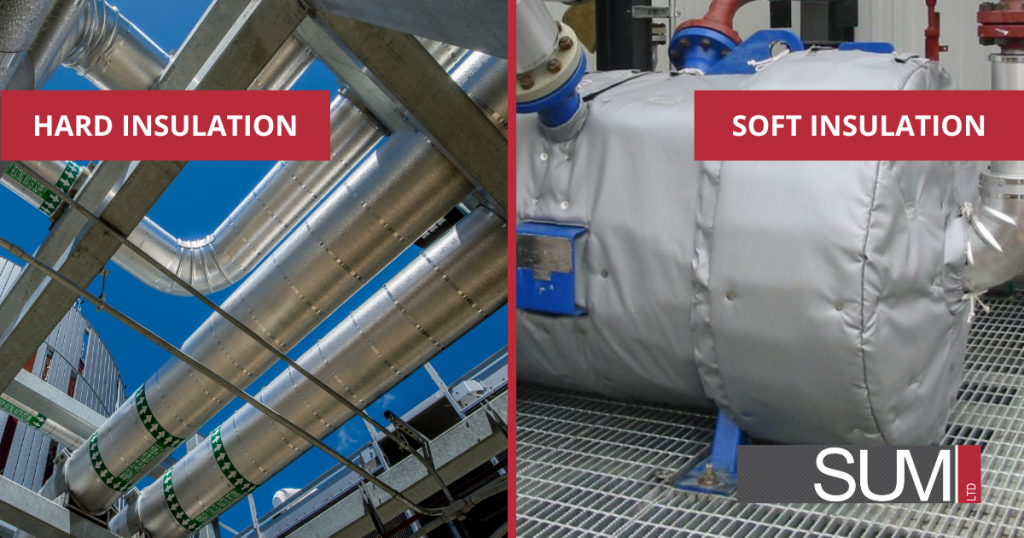The Benefits of Hard and Soft Insulation for Your Industrial Equipment
(Updated from earlier post, “What Is the Difference Between Hard and Soft Insulation?” originally published March 2020.)
Insulating your industrial equipment is a crucial step in ensuring the safety of your employees and reducing energy costs. Installing insulation on exposed, hot surfaces creates a barrier that protects your employees from burn hazards and retains radiated heat, resulting in energy savings. There are two types of insulation commonly used in an industrial setting: hard and soft insulation. In this article, we will explore the differences between these two types of insulation, and which one is best suited for your needs.
What is clear is that both insulation types, used in tandem, prove crucial to most energy saving or temperature protection solutions.
Hard Insulation
Built-to-last hard insulation is a permanent solution. Once installed, it is intended to remain in place indefinitely. This type of insulation is typically used for long straight-run piping. The longer the piping, the more cost-effective hard insulation is compared to custom-fitting it with soft insulation. Hard insulation is also beneficial for straight piping because it requires little to no maintenance.
However, removing hard insulation requires the assistance of an insulation contractor. The contractor will need to cut the insulation to avoid damaging the internal equipment and then replace and seal it, incurring charges for the owner of the infrastructure. Therefore, hard insulation is not recommended for areas that require frequent access or removal.
Soft Insulation
Customizable and tool-less soft insulation is a flexible solution that can be designed to fit any shape and size of equipment. It is also designed to be tool-less so that it can be removed and re-applied in a matter of minutes. This makes it ideal for unusual shapes and equipment that require frequent access.
Soft insulation is also a great alternative to hard insulation for areas that require removal for maintenance or inspections. It is important to note that custom-built soft insulation may be more expensive than hard insulation due to the additional labour and materials required. But even these initial costs are offset by the unnecessary costs involved in cutting through hard insulation to monitor and inspect the instruments beneath.
Which One Do You Need?
Insulating your industrial equipment with both insulation types is a smart investment that can benefit your company in numerous ways. Both solutions have their advantages and are effective in their respective uses.
It ultimately depends on your specific situation and needs. If you have long straight-run piping that requires insulation and infrequent access, hard insulation is a cost-effective solution. On the other hand, if you have equipment with unusual shapes or frequent access requirements, soft customized insulation blankets designed to fit your instruments down to the millimetre is the better choice.
Hard and soft insulation types Conclusion
If you need custom removable insulation blankets for your infrastructure, contact us today! Whichever solution you need, using both insulation types in conjunction can create a safer work environment and achieve higher energy savings through heat conservation.
Our attention to build quality has earned us the trust of companies around the world. You can find SUM Ltd custom removable (soft) insulation blankets around the world. Find them in the Alberta Oil Sands, on North Sea drilling platforms, Argentinian instruments, or right at home in BC ships and mines. Book a consultation with SUM Ltd today to get started on solutions for your custom insulation needs.
